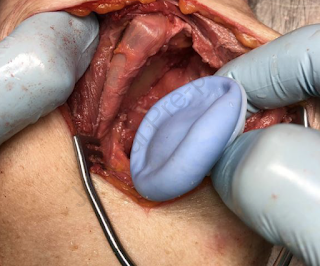These nine authors funded by De Soutter Medical point out that many different approaches are used for glenoid component placement in total shoulder arthroplasty and that "many types of guidance technology have been described to date often suffering from high costs, complex theatre integration, time inefficiency, and problems with day-to-day usability." To address these issues they propose an innovation consisting of an "intraoperative robotics platform, capable of rapid, real-time manufacture of low-cost patient-specific guides whilst overcoming many of the issues with existing approaches."
The platform consisted of a tableside robot, a 3D optical scanner, a three-axis sterile robotic drill and a two-axis receptacle into which the disposable consumables were inserted. The consumable comprised of a region of rapidly setting moldable material and a clip allowing it to be reversibly attached to the robot.
The results suggest "achieved accuracy levels may be equivalent to those seen in other existing guidance technologies".
Comment: This appears to be a highly expensive and labor intensive innovation that "may be equivalent" to existing technologies. In order to offset the incremental cost and labor, the proponents of this innovation will need to demonstrate a substantial increase in clinical outcomes realized by patients having shoulder arthroplasty using this method in comparison to established cost-effective approaches such as that shown in this link, a technique that does not routinely require CT scans, 3D planning, or robots.
Follow on twitter: https://twitter.com/shoulderarth
Follow on facebook: https://www.facebook.com/frederick.matsen
Follow on LinkedIn: https://www.linkedin.com/in/rick-matsen-88b1a8133/
How you can support research in shoulder surgery Click on this link.
Here are some videos that are of shoulder interest



